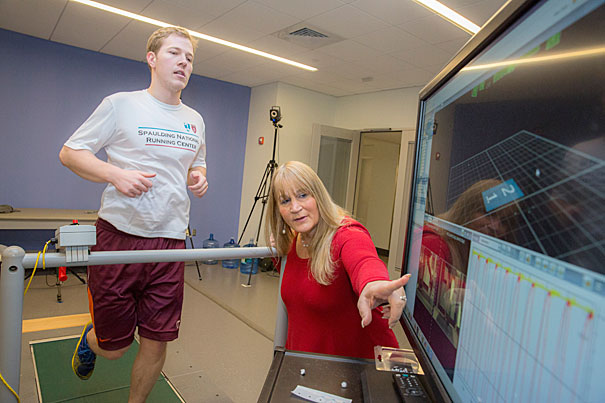A introduction to running efficiency and its importance in improving performance, with practical advice on how runners can evaluate and improve mechanics to impact efficiency. http://breakingmuscle.com/running/the-single-secret-to-becoming-a-better-runner
Footstrike 101: How Should Your Foot Hit The Ground?
A brief overview of what is considered good running form and the implications of footstrike type on a runner’s stride.
Anatomy for Runners
Anatomy for Runners Running has become more and more popular in recent years, with thousands of people entering marathons, buying new running shoes with the latest technology, and going for a daily jog, whether on the track or on a treadmill. Unfortunately, with running comes injuries, as a result of wrong information and improper training. Author Jay Dicharry was tired … Read More
The Effect of Asymmetry On Running Performance and Injury Prevention
A dive into symmetry – into how symmetry impacts running performance, how much asymmetry is typical and how does it impact injury risk.
The Definitive Guide to Pronation – Patient Version
The team at Running Reform pulled together a thoughtful guide to pronation, including a definition of what pronation is and common misconceptions regarding pronation’s impact on injury.
Ground Contact Time, Cadence & Injury
Discussing the oft quoted correlation between contact time and cadence, and the impact of contact time on injury.
Don’t Let Your Running Form Fall Apart
This article from Competitor discusses the impact of fatigue and form on running economy.
The Science of Running
The Science of Running by Steve Magness If you are looking for how to finish your first 5k, this book isn’t for you. The Science of Running is written for those of us looking to maximize our performance, get as close to our limits as possible, and more than anything find out how good we can be, or how good … Read More
Where Runners go Wrong
Based on a 2012 Harvard study, this article looks at heel strikers (the most common type of runner) who have never been injured. Evaluating injury patterns and running styles, they looked into how impact load creates cumulative strain. Image Credit: Kris Snibbe/Harvard Staff Photographer
180 is Not a Magic Number
We’ve all heard that if you want to improve your running game, you should target a stride rate of 180 steps per minute. We’re not convinced. Our favorite example is our head of engineering. At 6’5” we’re pretty sure a 180 stride rate is a physical impossibility. We took a look at data we captured at the 2015 TCS NYC Marathon to look into … Read More




